James Cook
︎
typewriter artist
London, UK
typewriter artist
London, UK
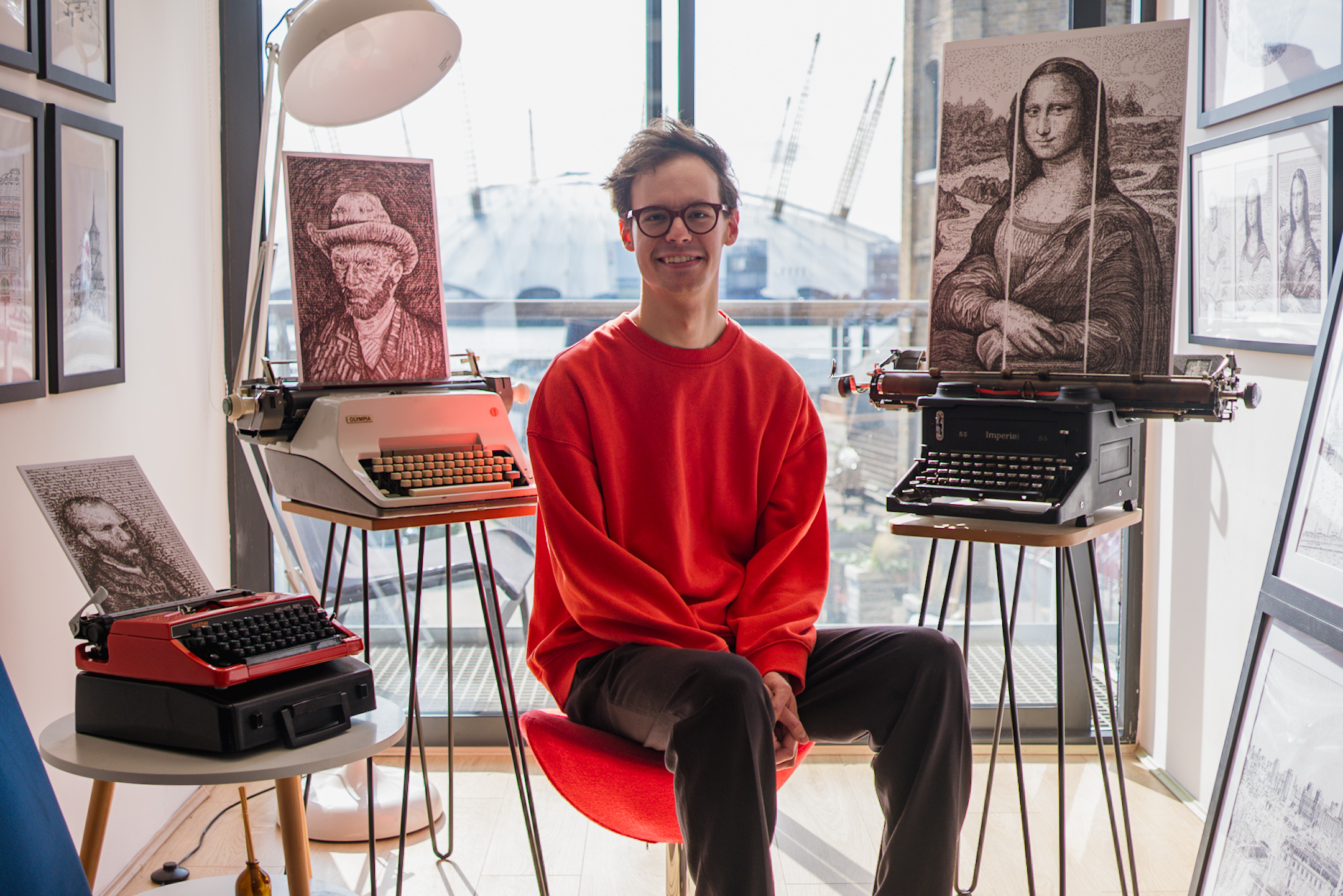
TO BE VERY honest, I came across James Cook’s artwork while scrolling Instagram. His unique way of creating art with a typewriter was not something I had encountered before. As he
says on his website, he creates “a picture worth a thousand words”, using just the ink and keys of a typewriter to create architectural scenes, portraits of celebrities and
famous paintings. I jumped at the chance to meet James at his studio located in
Trinity Buoy Wharf, an arts and culture centre in London’s Docklands.
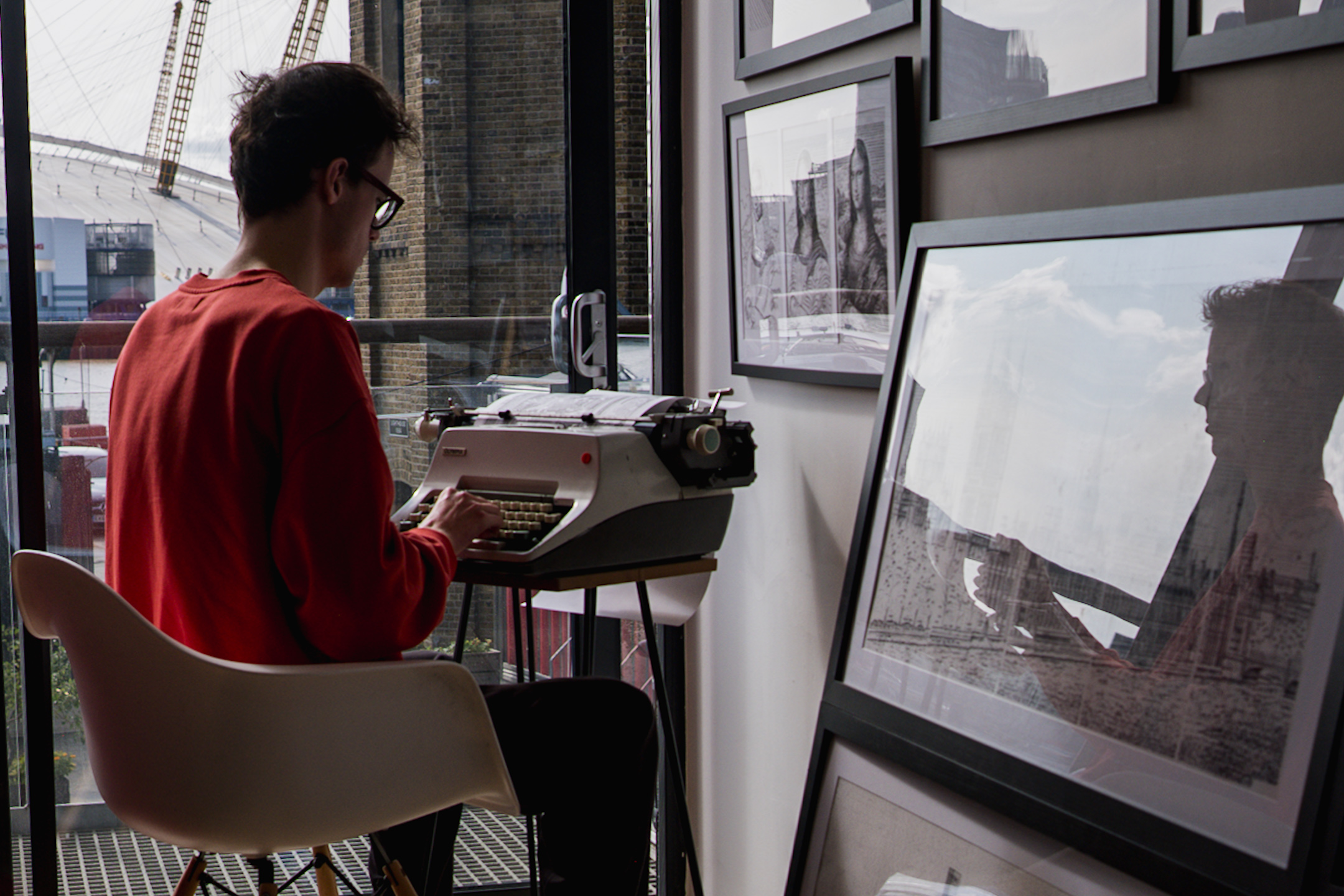
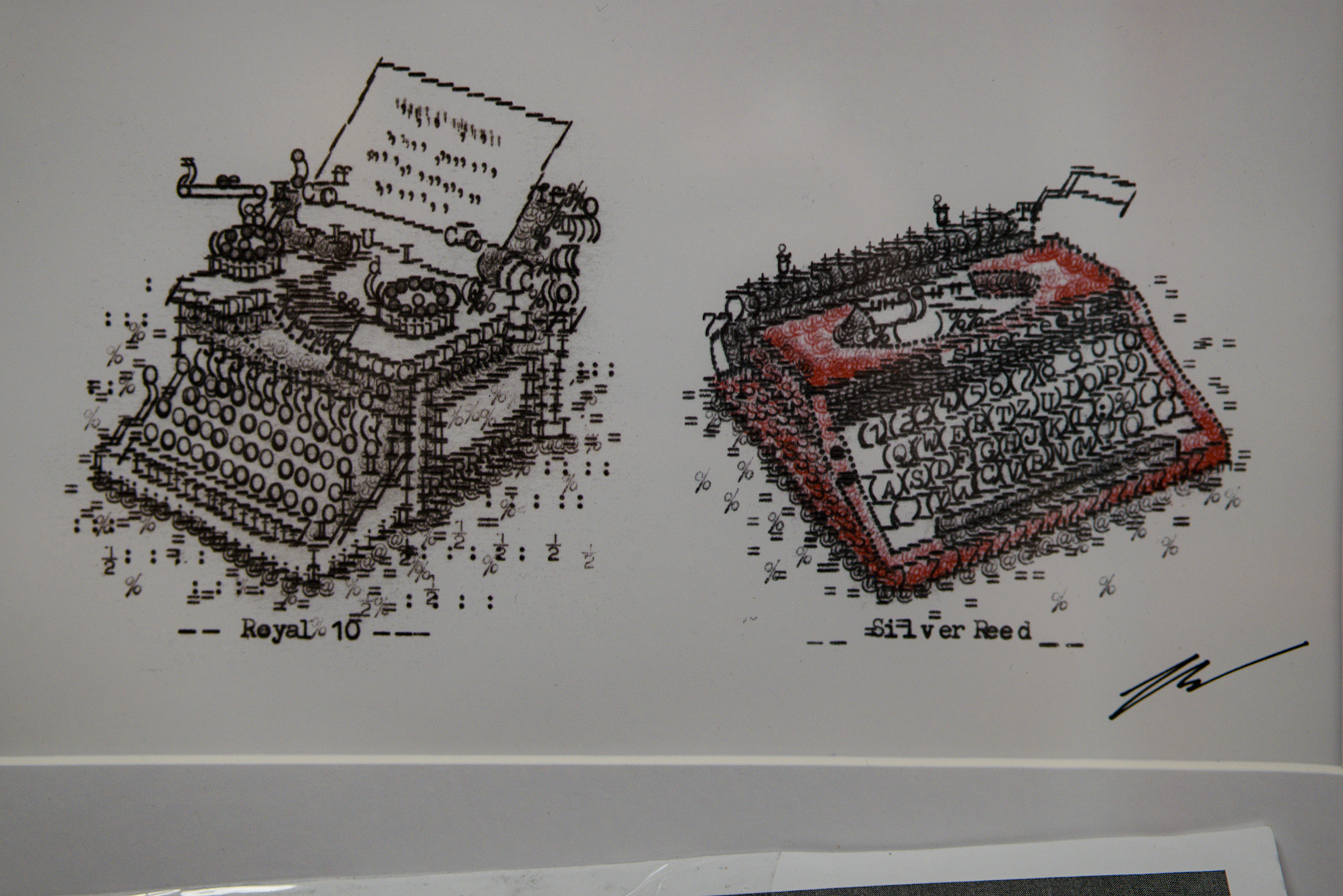
How did you
get into creating art with a typewriter?
While researching an art project at school, I found that David Hockney used fax machines in his work. I thought I’d try out something different and bought a typewriter to create art with typed-depictions, also known as ‘typicitions’, using letters to form an image, to create art to sell. If I’m being completely honest, I wasn’t sure where this was going to lead, I was simply an architecture student in London and needed some money to pay for rent. That’s almost a decade ago now.
While researching an art project at school, I found that David Hockney used fax machines in his work. I thought I’d try out something different and bought a typewriter to create art with typed-depictions, also known as ‘typicitions’, using letters to form an image, to create art to sell. If I’m being completely honest, I wasn’t sure where this was going to lead, I was simply an architecture student in London and needed some money to pay for rent. That’s almost a decade ago now.
Is there really no one else who does this typewriter art?
There isn’t much history of typewriter art, and it’s often not taken seriously in the art world. It was only later that I discovered the work of Paul Smith, who used typewriters to create his art. He couldn’t use the usual pens or brushes because he had cerebral palsy, but with just letters, numbers and punctuation, he could create so much detail. Despite his circumstances, he had an art career that spanned eight decades before he passed away. That really inspired me.
There isn’t much history of typewriter art, and it’s often not taken seriously in the art world. It was only later that I discovered the work of Paul Smith, who used typewriters to create his art. He couldn’t use the usual pens or brushes because he had cerebral palsy, but with just letters, numbers and punctuation, he could create so much detail. Despite his circumstances, he had an art career that spanned eight decades before he passed away. That really inspired me.
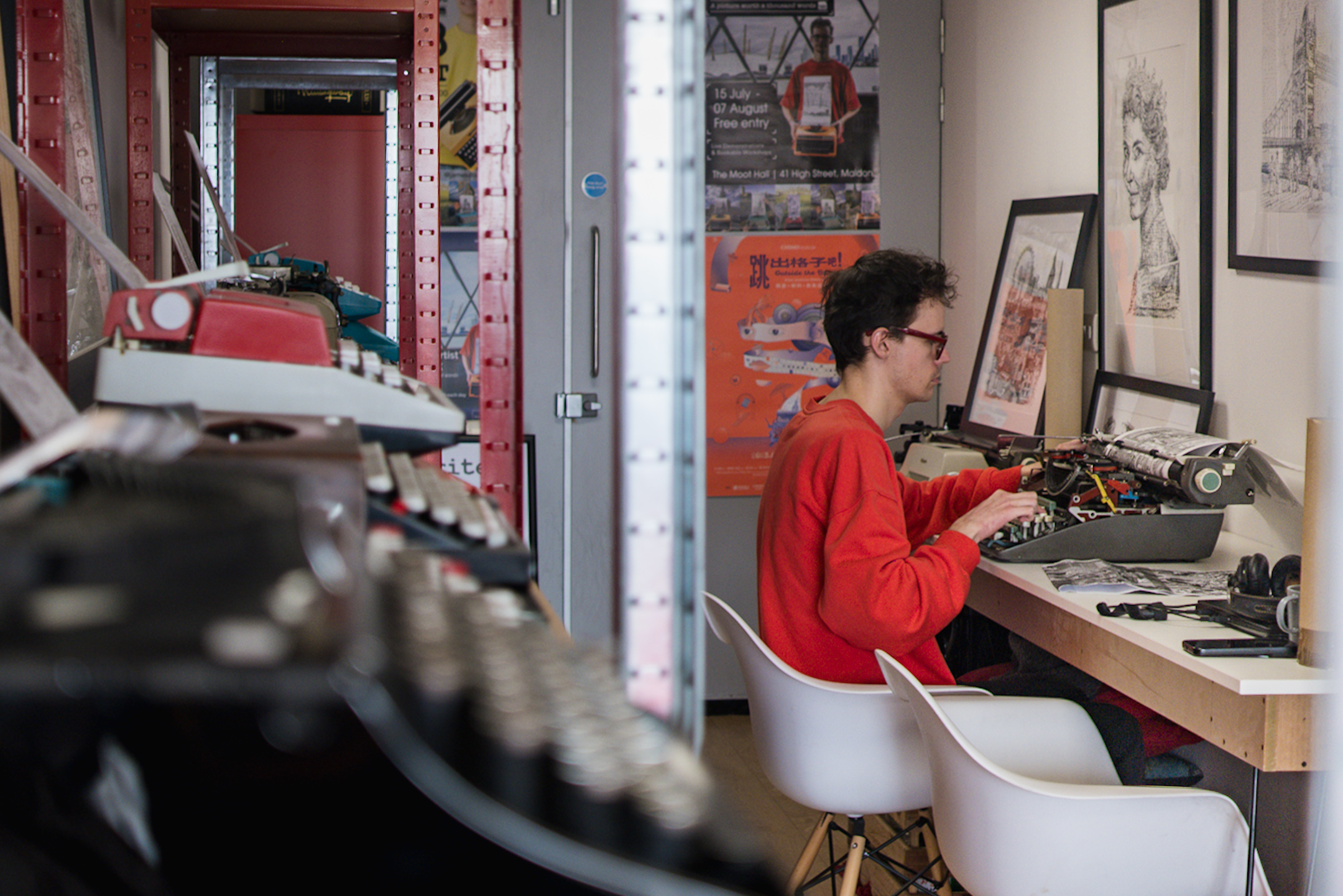

Oh
wow, you’ve been doing this for almost a decade!
Yes! I started in 2014 but only took on commission work in 2016. It began with architecture pieces, like a building in New York or the Hammersmith Bridge in London.
Where I am now has picked up a lot since early last year: my social media has grown significantly. (With 29k followers on Instagram in 2022 to 622k at time of writing.) I haven’t changed my approach other than to create video reels that show my process. I film it in a fly-on-the-wall style because I believe it is as important if not more than the final outcome.
Yes! I started in 2014 but only took on commission work in 2016. It began with architecture pieces, like a building in New York or the Hammersmith Bridge in London.
Where I am now has picked up a lot since early last year: my social media has grown significantly. (With 29k followers on Instagram in 2022 to 622k at time of writing.) I haven’t changed my approach other than to create video reels that show my process. I film it in a fly-on-the-wall style because I believe it is as important if not more than the final outcome.
Did you start collecting typewriters as an extension of your art?
Sort of. I’m up to about 70 typewriters now. I think I only purchased 4 of them, the rest are gifts from people who have heard about my work. Apart from those you see here in the studio, the rest are in galleries or on exhibition. Some are hard to find now, like this antique Visomatic, that only has 30 left in the world, or this one given by a Hebrew Professor that writes Hebrew script.
One special one was a gift from a lady who used to work as a private clerk to the Queen in Buckingham Palace. She told me that she had written over tens of thousands of letters and when she retired, she took her typewriter as a leaving present. When she came across my work, she contacted me to give her typewriter to me. I did a special portrait of the Queen for her.
Sort of. I’m up to about 70 typewriters now. I think I only purchased 4 of them, the rest are gifts from people who have heard about my work. Apart from those you see here in the studio, the rest are in galleries or on exhibition. Some are hard to find now, like this antique Visomatic, that only has 30 left in the world, or this one given by a Hebrew Professor that writes Hebrew script.
One special one was a gift from a lady who used to work as a private clerk to the Queen in Buckingham Palace. She told me that she had written over tens of thousands of letters and when she retired, she took her typewriter as a leaving present. When she came across my work, she contacted me to give her typewriter to me. I did a special portrait of the Queen for her.
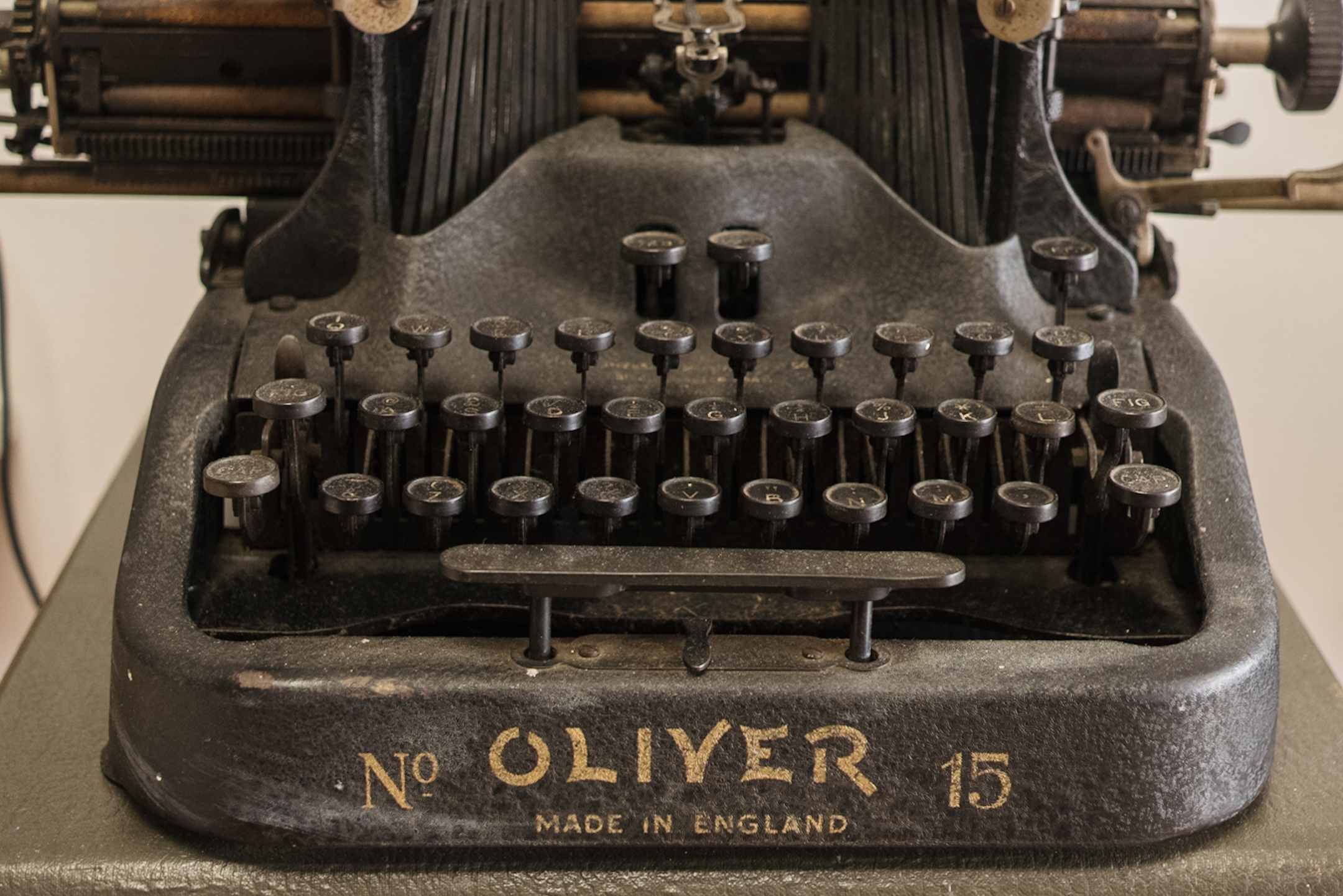
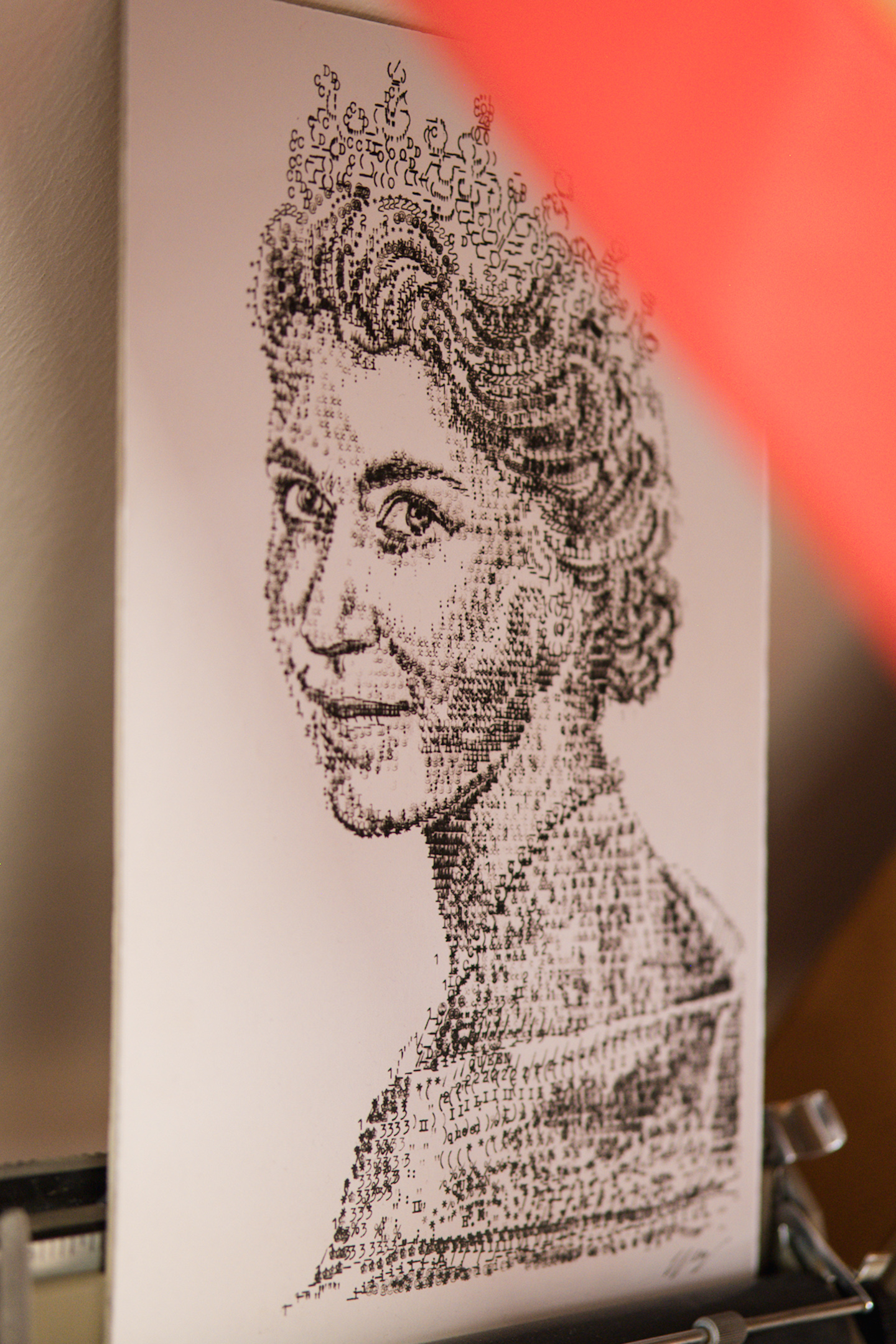
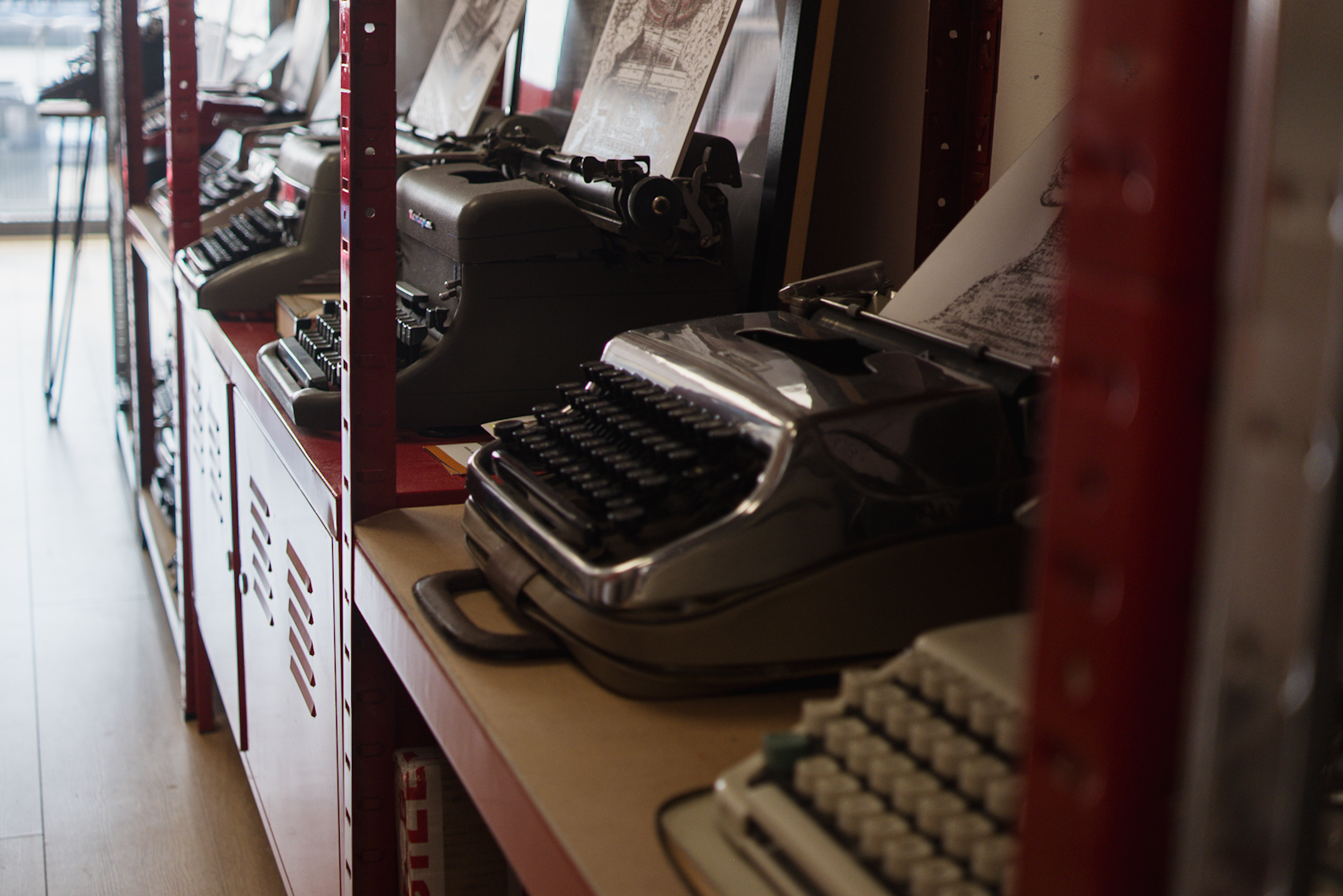
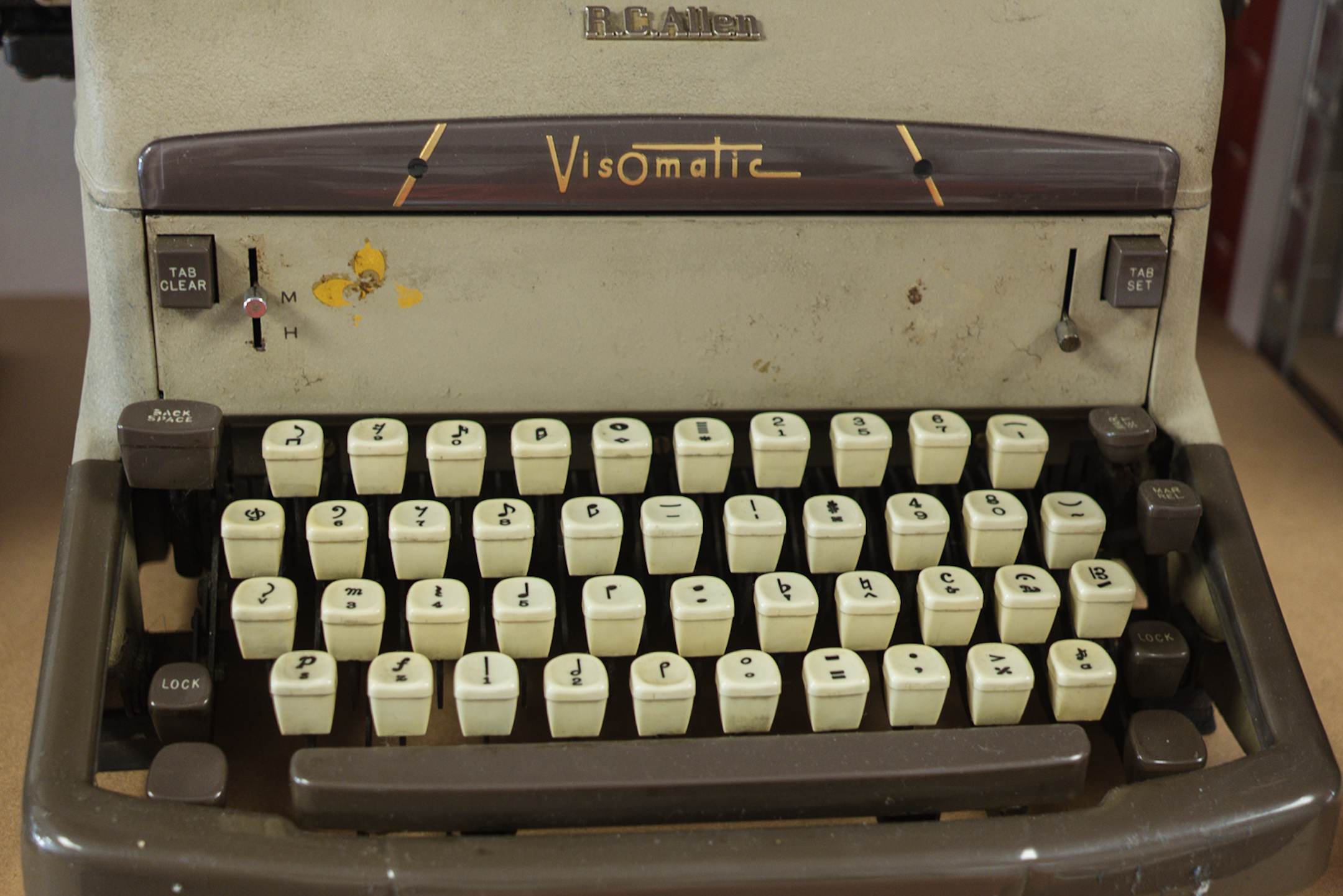
What is your art process?
There are essentially two layers to each piece of my work. The first is the obvious: the subject (urban landscape, architecture or person) which is mostly viewed from a distance. This I create with the 44 keys on a typewriter (characters, punctuation marks and letters) as my tool, but I also apply more or less pressure on the keys to achieve tones and shades.
Then there are the details revealed when you view it up close. This idea of a “secret” second layer came to me much later. I add context and location-based words into the piece. For example, who’s owned a certain art piece or the name of the artist. For my piece on the ‘Mona Lisa’, I added the word Napoleon because according to history, Napoleon once hung the ‘Mona Lisa’ in his bedroom. These tiny “easter eggs” that bring me and the viewer some joy.
There are essentially two layers to each piece of my work. The first is the obvious: the subject (urban landscape, architecture or person) which is mostly viewed from a distance. This I create with the 44 keys on a typewriter (characters, punctuation marks and letters) as my tool, but I also apply more or less pressure on the keys to achieve tones and shades.
Then there are the details revealed when you view it up close. This idea of a “secret” second layer came to me much later. I add context and location-based words into the piece. For example, who’s owned a certain art piece or the name of the artist. For my piece on the ‘Mona Lisa’, I added the word Napoleon because according to history, Napoleon once hung the ‘Mona Lisa’ in his bedroom. These tiny “easter eggs” that bring me and the viewer some joy.
How long does it take to finish each art piece?
I take quite a long time to finish each piece. An A4 piece will take a week? One of the common challenges is when a key gets stuck in the typewriter – it happens all the time, and I usually find a way around it.
Portraits are definitely more time-consuming because they are more detailed than architecture pieces. Also, there’s the challenge to capture someone’s likeness that lingers at the back of my mind.
I’m currently working on a private commission, a 1.2 metre panoramic piece. These panoramic peices take longer, about one month’s worth of work. Even if I wanted to, I can’t take on more work because I’m doing this solo.
I take quite a long time to finish each piece. An A4 piece will take a week? One of the common challenges is when a key gets stuck in the typewriter – it happens all the time, and I usually find a way around it.
Portraits are definitely more time-consuming because they are more detailed than architecture pieces. Also, there’s the challenge to capture someone’s likeness that lingers at the back of my mind.
I’m currently working on a private commission, a 1.2 metre panoramic piece. These panoramic peices take longer, about one month’s worth of work. Even if I wanted to, I can’t take on more work because I’m doing this solo.
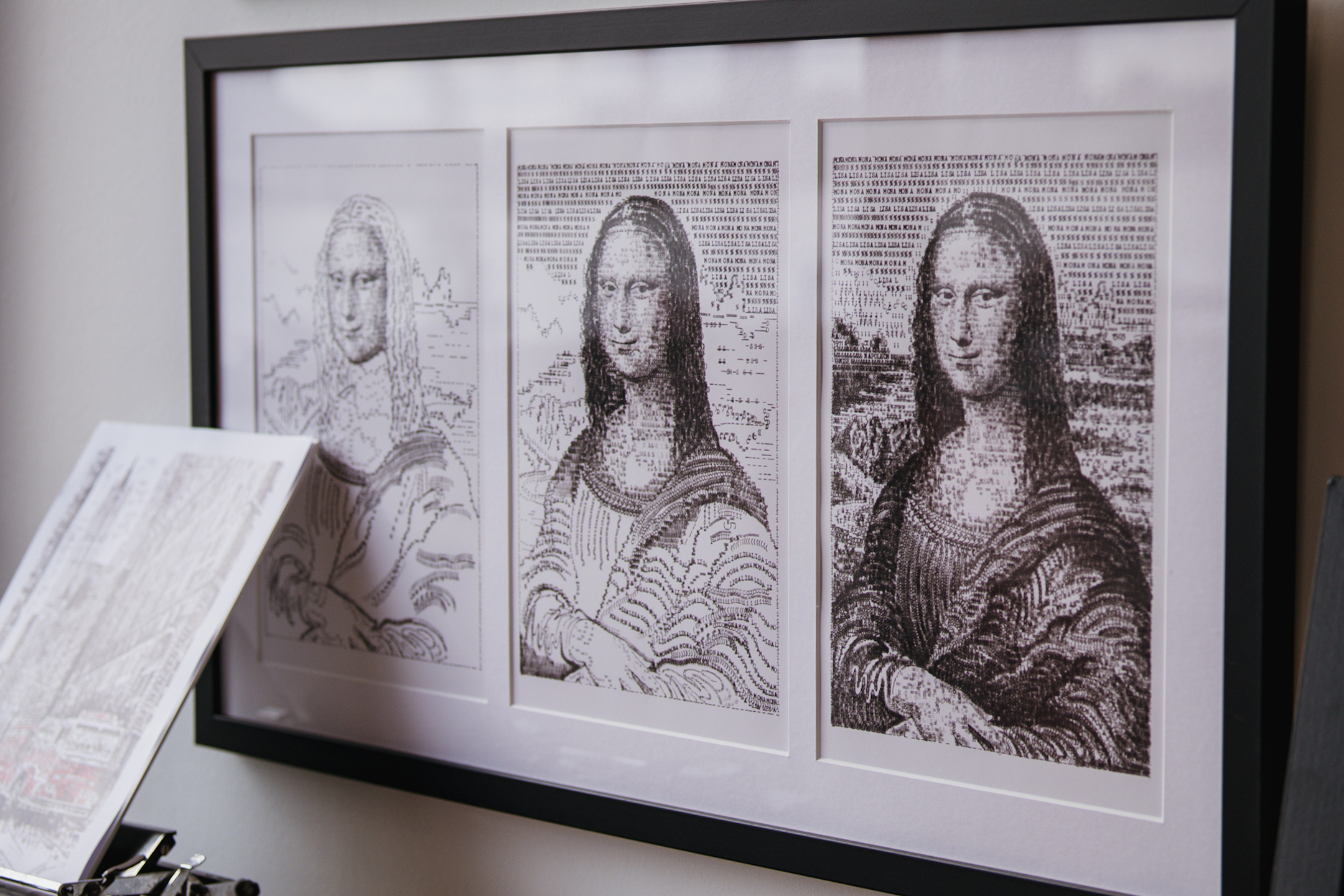
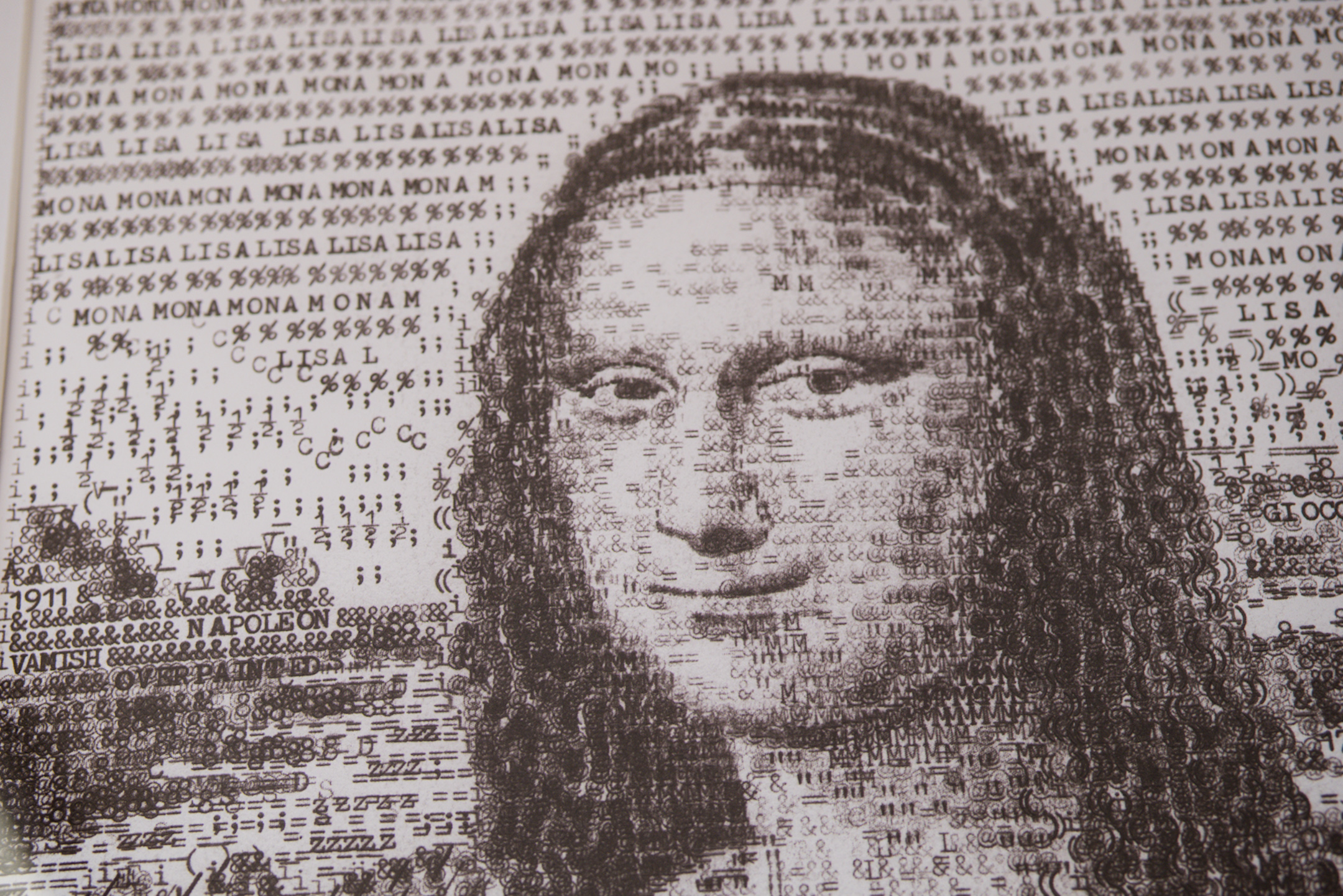
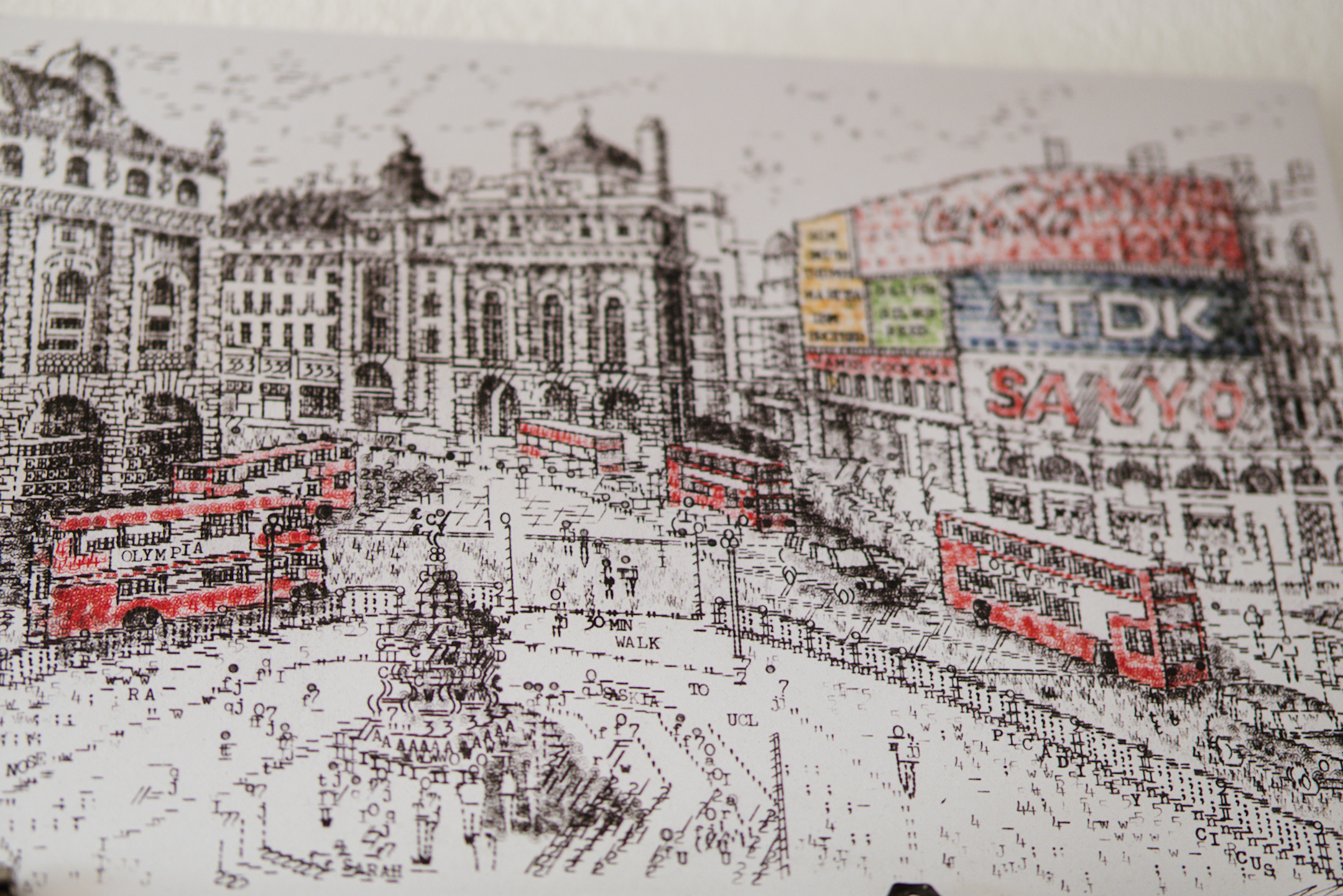
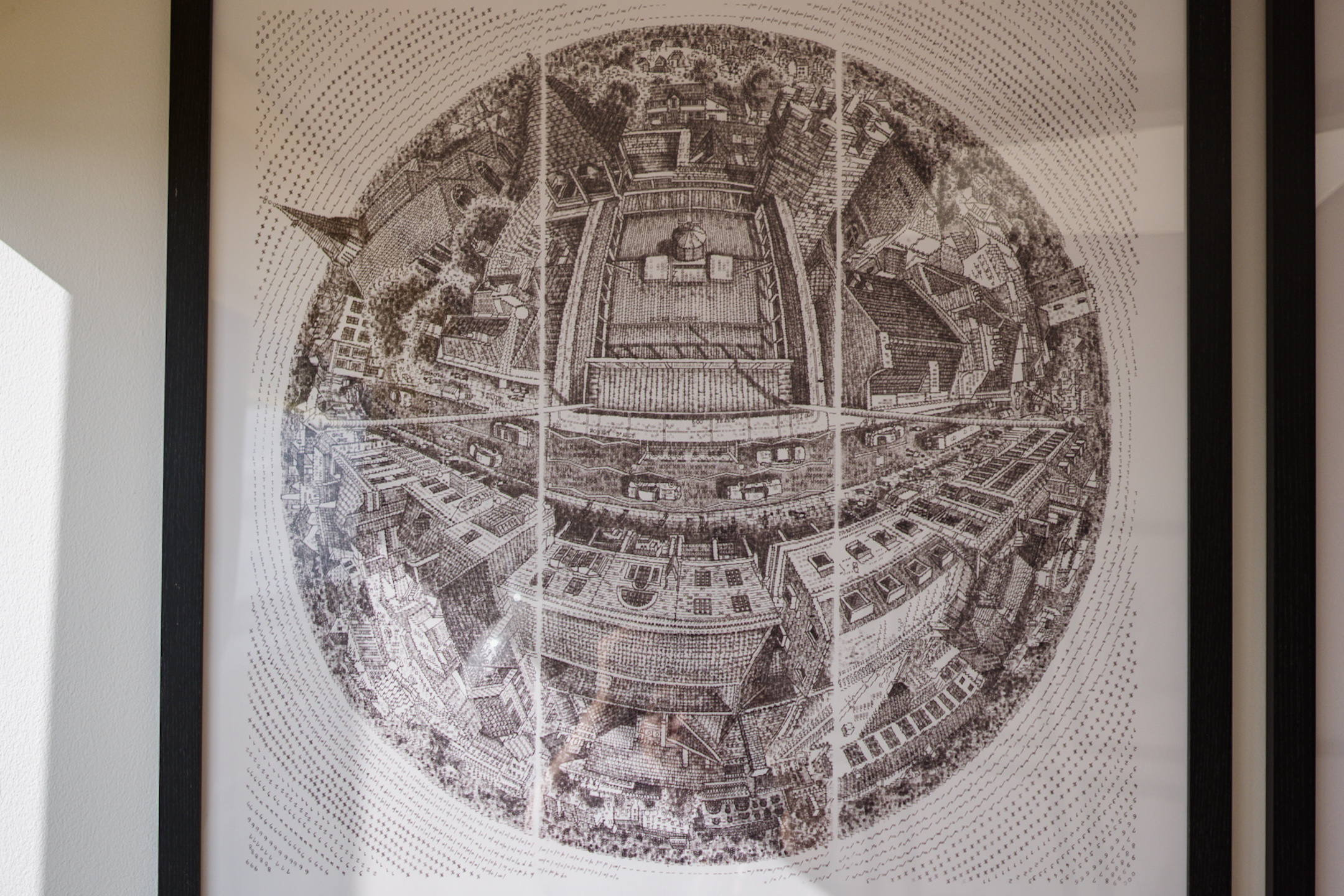
What is one thing others might find surprising about your artwork?
There’s an illusion of accuracy when using a typewriter, probably because it is a machine and there are a set of type forms and shapes. However, it is the details of how you fill the picture that can bring it to life.
I’ve studied Paul Smith’s work and it’s helped me figure out what letters can be used to represent parts of a face or lines in architecture. I have enlarged his work to see and observe how he achieves a certain effect for specific pieces.
There’s an illusion of accuracy when using a typewriter, probably because it is a machine and there are a set of type forms and shapes. However, it is the details of how you fill the picture that can bring it to life.
I’ve studied Paul Smith’s work and it’s helped me figure out what letters can be used to represent parts of a face or lines in architecture. I have enlarged his work to see and observe how he achieves a certain effect for specific pieces.
Also, I would love to do more portraits, maybe in
the form of one-to-one sittings. I find faces so much more challenging because the
facial elements (eyes, nose, other distinctive features) are much harder to
capture. Architecture, on the other hand, is more linear and straightforward.
One thing I’m enjoying is how my art is gaining me access to places that the public rarely sees. For example, I got to go up to the lighthouse here at Trinity Buoy Wharf and I’m doing a piece which lets me work in the Royal Albert Hall. Just listening to my own typing in that space is pretty magical.
One thing I’m enjoying is how my art is gaining me access to places that the public rarely sees. For example, I got to go up to the lighthouse here at Trinity Buoy Wharf and I’m doing a piece which lets me work in the Royal Albert Hall. Just listening to my own typing in that space is pretty magical.
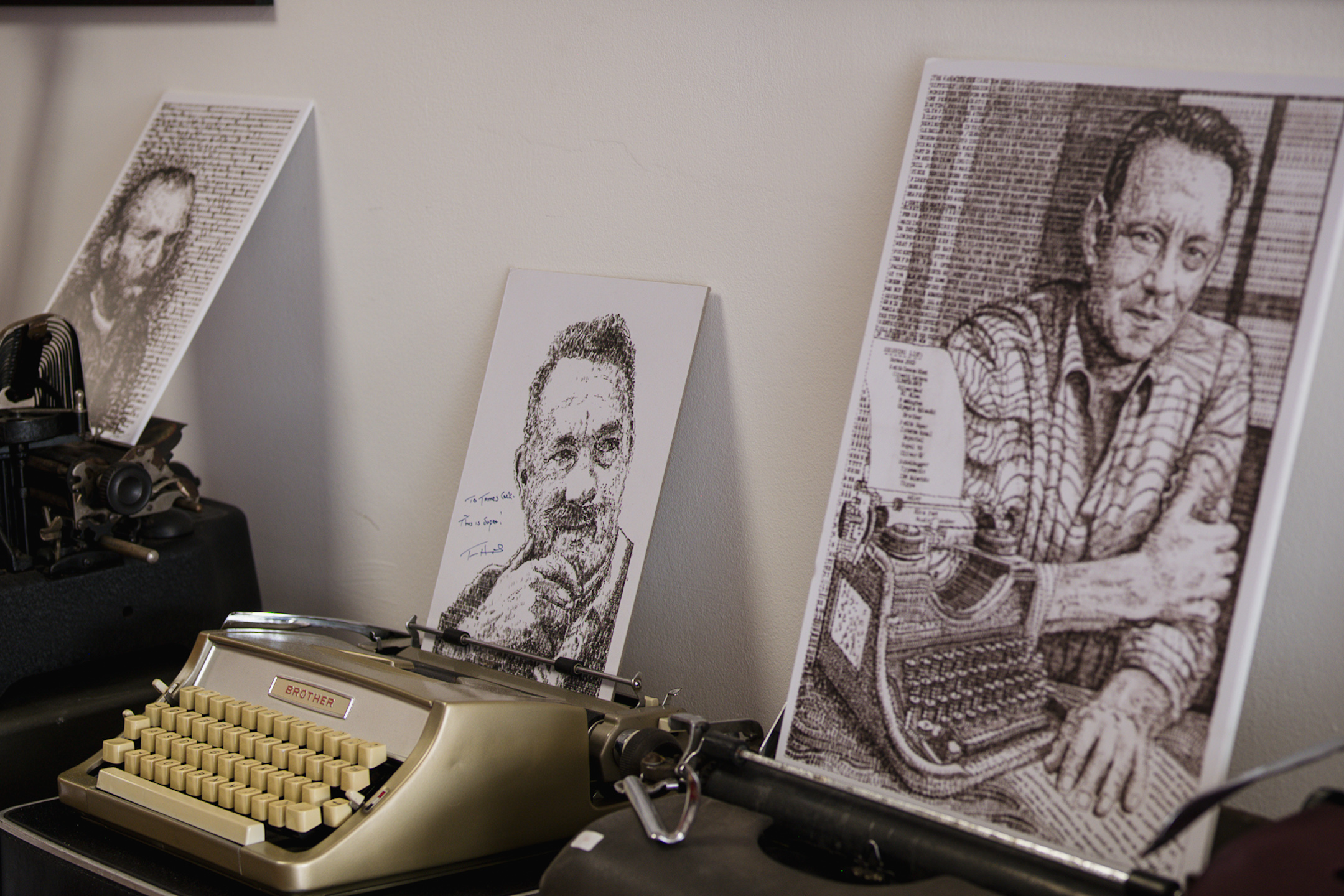
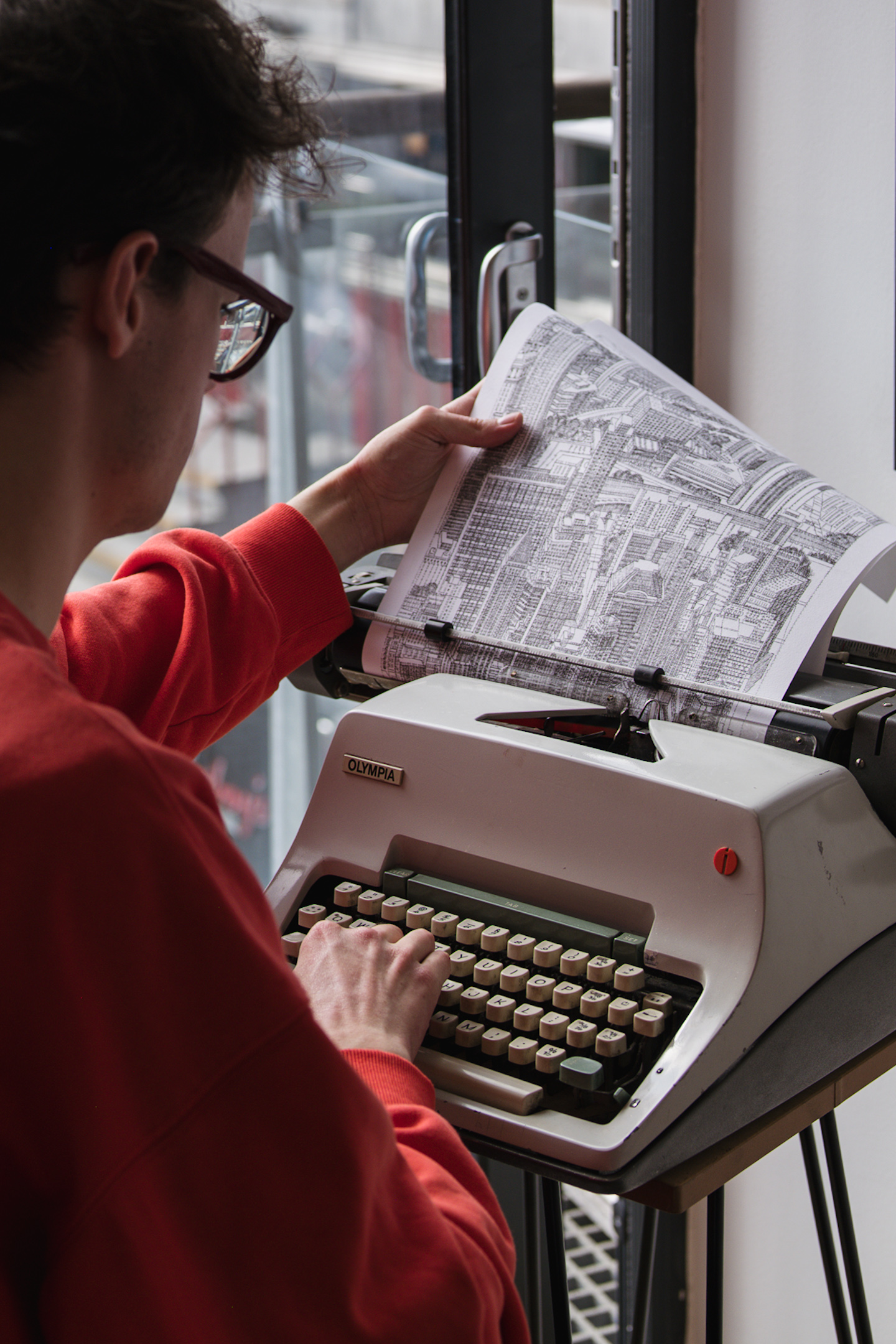
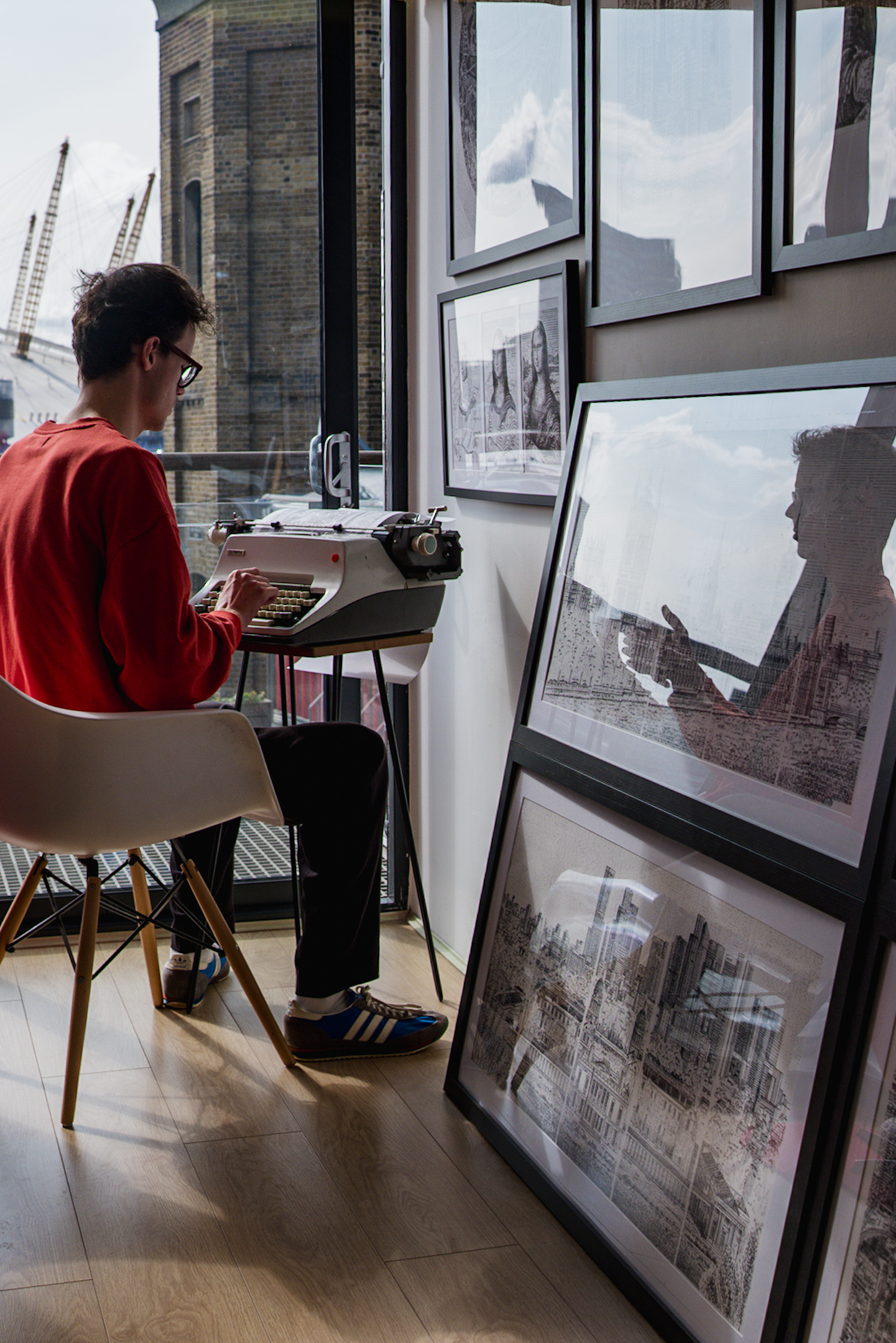

How important it is for you to have a studio?
I love having this space in Trinity Buoy Wharf! One of the first panoramic pieces I did was of the view out of my window. Having a studio is useful, I can keep the artwork away from home and have a space to focus soley on my art, especially since I work better at night.
That said, I also do love working outdoors. I have a more portable typewriter that I bring out once or twice a month. It really depends on the weather, but it’s nice to be outdoors and doing my art on-location sometimes. Some people also recognize me and come up to say hi, which is lovely.
I love having this space in Trinity Buoy Wharf! One of the first panoramic pieces I did was of the view out of my window. Having a studio is useful, I can keep the artwork away from home and have a space to focus soley on my art, especially since I work better at night.
That said, I also do love working outdoors. I have a more portable typewriter that I bring out once or twice a month. It really depends on the weather, but it’s nice to be outdoors and doing my art on-location sometimes. Some people also recognize me and come up to say hi, which is lovely.
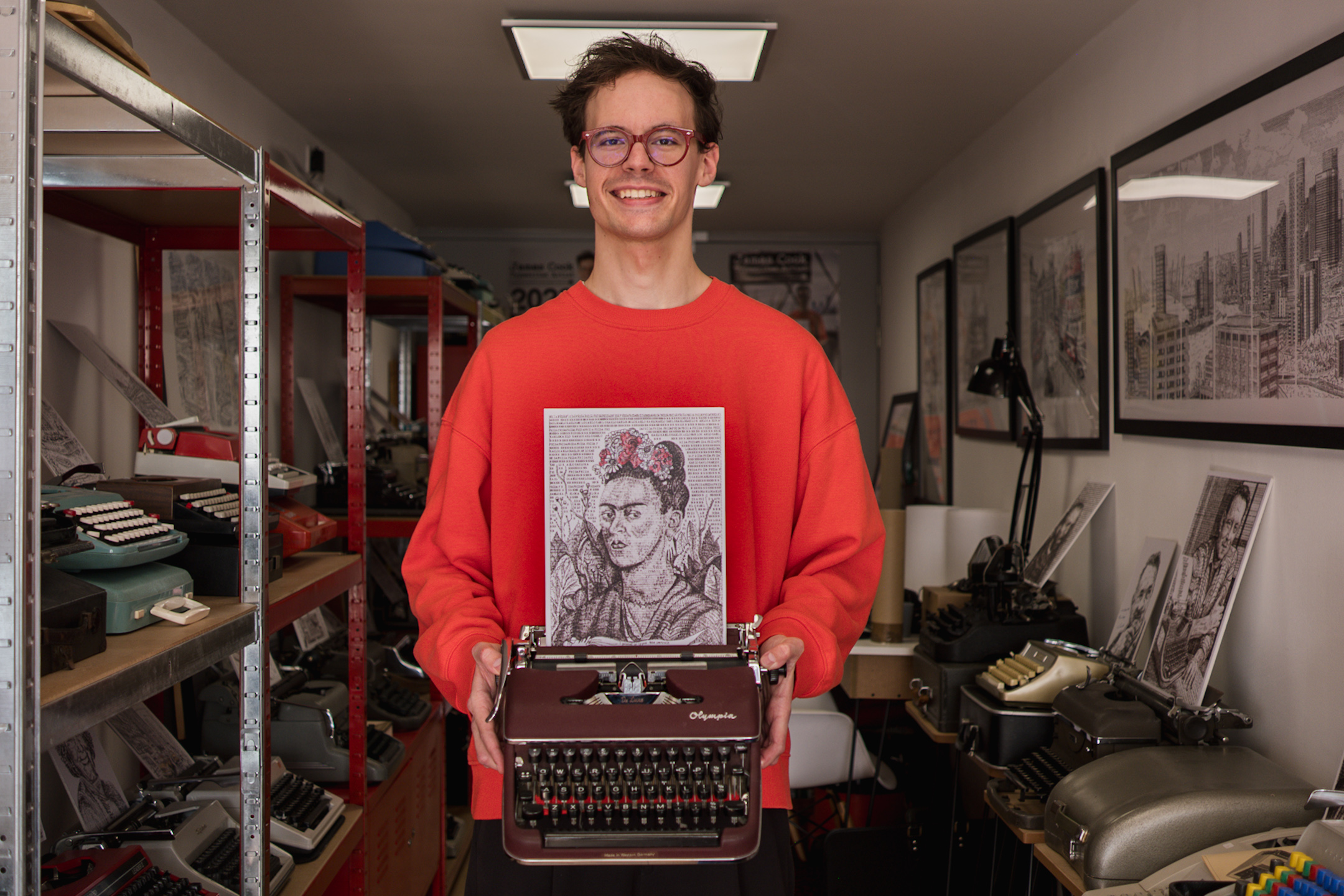
As our conversation continued and I watched James as he worked, he revealed that almost all of the original art pieces have been sold, including commissions for period film promotions (like the 2023 film, Boston Strangler) where the clients
wanted a more analogue feel. He also displays a portrait that he did of Tom Hanks, which is signed by the actor himself, who is also an avid typewriter collector.
Hearing James’ story of how he started his art as a way to earn money to turning it into a full-time career in 2021, is a testament to his resilence to keep at perfecting his craft despite the initial lack of engagement. I love that he is helping draw attention to such a vintage machine, and creating such distinct, multi-layered artworks.
Hearing James’ story of how he started his art as a way to earn money to turning it into a full-time career in 2021, is a testament to his resilence to keep at perfecting his craft despite the initial lack of engagement. I love that he is helping draw attention to such a vintage machine, and creating such distinct, multi-layered artworks.
Follow:
James Cook
https://jamescookartwork.com
https://www.instagram.com/jamescookartwork
︎
Visited September 2023, published September 2024.
James Cook
https://jamescookartwork.com
https://www.instagram.com/jamescookartwork
︎
Visited September 2023, published September 2024.